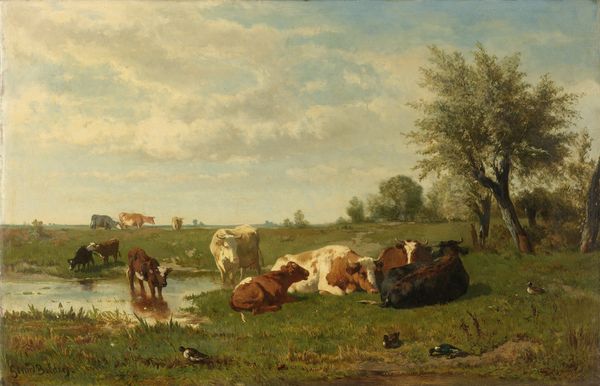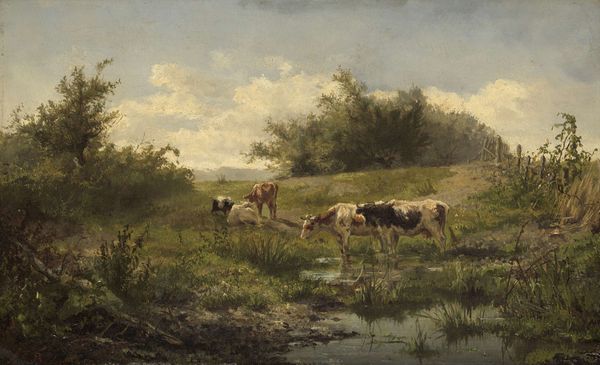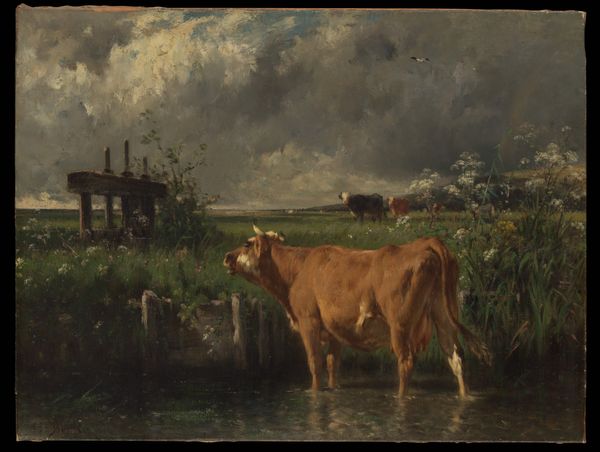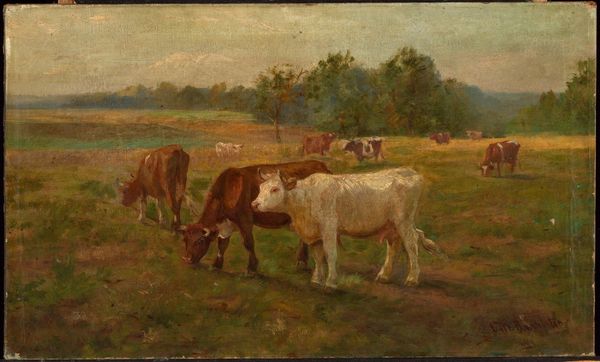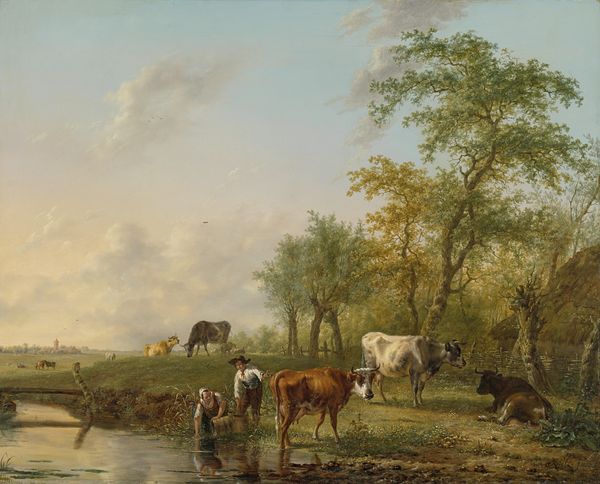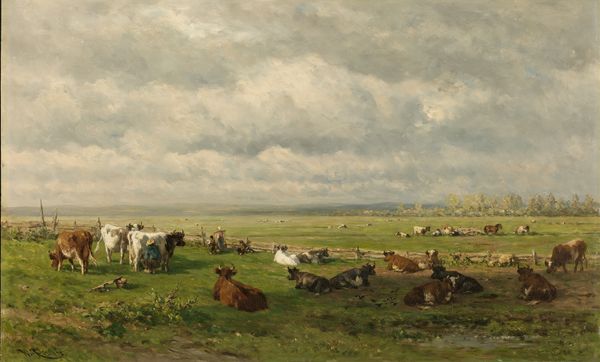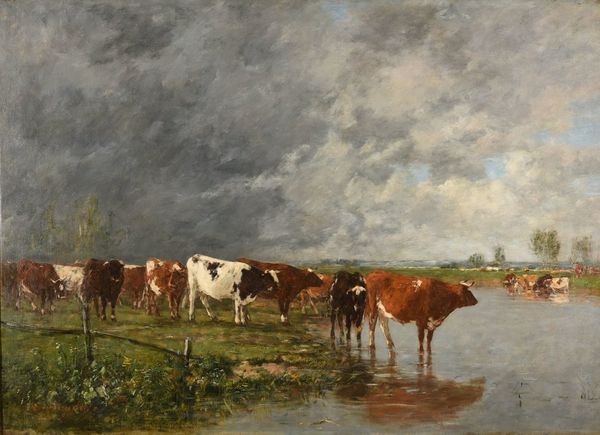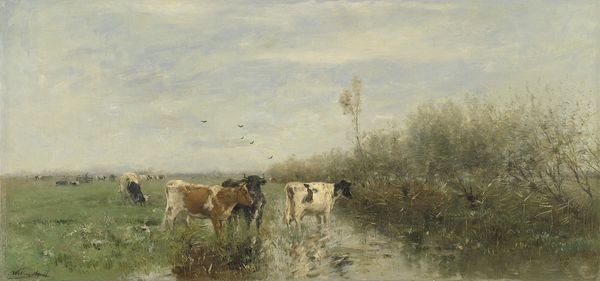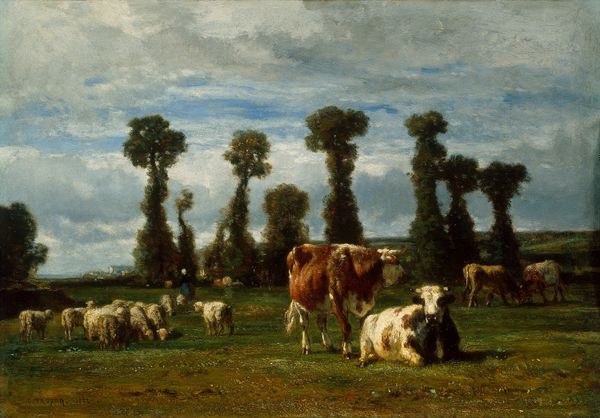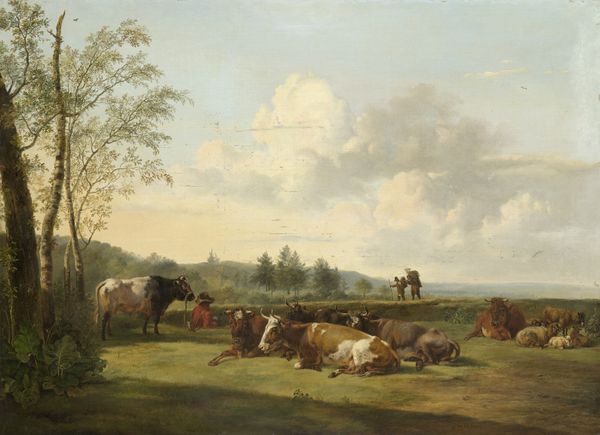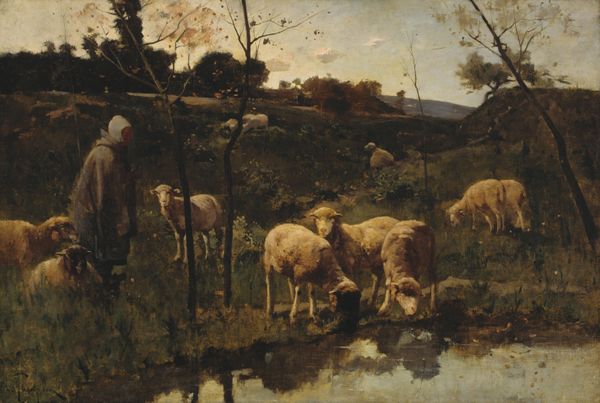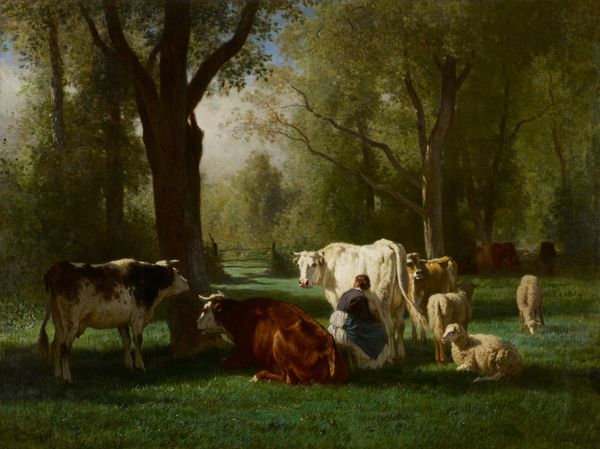
Dimensions: 36 x 54 1/4 in. (91.4 x 137.8 cm)
Copyright: Public Domain
Curator: A rather idyllic scene greets us in James M. Hart’s "From Shifting Shade," painted in 1887. It epitomizes the Hudson River School’s later forays into genre painting, a captivating example rendered with oil paints. Editor: It certainly feels nostalgic, even sentimental. The subdued palette, the pastoral scene…there’s a quiet calm, a sort of peaceful hum radiating from this painting. Curator: Indeed, Hart uses symbolism masterfully. Cattle grazing in a lush meadow evoke notions of plenty, fertility, and the pastoral ideal which speaks to America’s romantic vision of itself. Consider the visual echo of this gentle, agrarian way of life—was it perhaps already fading into cultural memory as industrialization grew? Editor: It’s interesting to think of this as a visual argument for a particular way of life. The inclusion of the genre is a canny move because it softens any explicit political message. The image becomes not just a beautiful scene but a validation of a certain vision of American prosperity, land, and cultivation. The shading feels rather calculated, as if a dramatic political statement were being made behind the idyllic vision. Curator: Precisely! Hart’s skill lies in that subtlety. Look how he arranges the cows: their varied hues adding dynamism while suggesting communal harmony. The puddle mirroring the sky could represent reflections on societal values and collective future, adding depth that moves beyond surface aesthetics. It subtly enhances our reading of the subject matter itself. Editor: Though it risks being interpreted as mere decoration, this detail underscores that paintings play an important role as carriers of dominant ideas about community, the land, and human-nature relationship. By framing rural America so sympathetically, paintings like "From Shifting Shade" affirmed viewers' shared belief in an ideal even as that way of life changed. It makes you wonder about the cultural work such paintings continue to do today! Curator: It encourages reflection on enduring archetypes present within landscape painting, offering a symbolic link between us and bygone values. It’s this connection that offers profound meaning beyond representational beauty, even to this day. Editor: Yes, precisely. It's a complex dance of pastoral ideals and emerging national identity; certainly worthy of careful consideration!
Comments
No comments
Be the first to comment and join the conversation on the ultimate creative platform.
